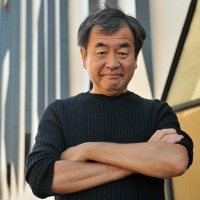As a homage to Tottori, which is well-known for folk crafts (‘Mingei’) culture, the team at Kengo Kuma and Associates incorporated local craftsmanship into the café interiors.

Tottori Takahama Café by Kengo Kuma & Associates. Photograph by Kawasumi-Kobayashi Kenji Photograph Office.

Tottori Takahama Café by Kengo Kuma & Associates. Photograph by Kawasumi-Kobayashi Kenji Photograph Office.
Project description by Kengo Kuma & Associates
We designed an observatory/café that overlooks the Tottori Sand Dunes, using wood abundantly in a hybrid structure of cross-laminated timber and reinforced concrete.
Envisioned as a “staircase to the sky,” the cross-laminated timber exterior provides a warm texture that blends in with the surrounding sand dunes.
As a homage to Tottori, which is well-known for folk crafts (“Mingei”) culture, interior elements incorporate local craftsmanship. Chairs are designed with cross-laminated timber, while light pendants are made of Washi paper sprinkled with local sand.
The bathroom sinks are made by Nakai-gama, a Tottori Mingei pottery workshop, which uses a beautiful combination of green and black glazing.





































